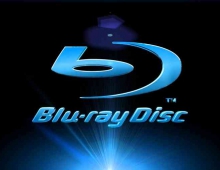
Microsoft to Support Taiwanese FVD Project for HD Video
Microsoft plans to cooperate with Taiwanese software and hardware companies to jointly promote Taiwan's next-generation DVD format, the forward versatile disc (FVD), an alternative format to Blu-Ray and HD-DVD.
Microsoft Taiwan recently said that Jean-Philippe Courtois, president of Microsoft International, would express Microsoft's support for Taiwan's digital-content development, the Forward Versatile Disc, in his visit at the Taiwan Microsoft's Technology Center (MTC).
Guided by Taiwan's Advanced Optical Storage Research Alliance (AOSRA) in conjunction with the government-sponsored Industrial Technology Research Institute (ITRI), the FVD format is based on a red-laser based high-definition DVD. The FVD's major rivals are blue-laser formats supported by large Japanese companies such as Sony and Toshiba. The format competition between the major Japanese firms has also provided some survival space for FVD.
Several optical-disc makers in Taiwan, such as Ritek and CMC Magnetics, have participated in the development of FVD format and are ready to mass-produce discs with the new format when the market matures. Some Taiwanese suppliers of pre-recorded discs, including U-Tech Media, have also released FVD films in a bid to increase product diversity.
Some optical-disc drive makers have also joined FVD development project and have devoted themselves to producing FVD-compatible drives. These companies include Lite-On IT and Quanta Storage, but their total annual production volume of FVD drives this year is expected to only reach into the hundreds of thousands.
If the FVD format wins support from Microsoft, Taiwanese makers of optical discs and drives are expected to gain a great opportunity to enter the global market because they will not have to pay the high royalty costs of the big international formats, Blu-Ray and HD-DVD.
The FVD format differs technically from the DVD standard in physical format, compression (encoding) and decoding, and content protection, and therefore is not subject to normal DVD royalty charges. However, the FVD standard is compatible with the DVD format, a fact that strengthens its position to the market. First-generation FVD discs will have a storage capacity of 5.4-6GB for single-sided discs, and 9.8-11GB for double-sided discs, and will support resolutions of up to 1280 x 720 pixels. Second-generation FVD discs are expected to have a capacity of more than 15GB and will support resolutions up to 1920 x 1080 pixels. However, the FVD standard is compatible with the DVD format.
The most important factor that will decide FVD's global success is a possible support from companies in China. Chinese companies, however, are working on a format called the enhanced versatile disk (EVD).
China's disc player industry is also suffering from being forced to pay foreign patent magnates billions of US dollars of patent fees and is now striving for the research and development of high definition video disc technology.
On July 8, the Chinese Ministry of Information Industry declared that the national standard of EVD (Enhanced Versatile Disc) for the electronic industry was officially publicized online. Chinese industry, however is examining two more formats based on red-laser, for storing high-def content: The HVD and the HDV. The basic reasons that forced Chinese industry to look for alternatives of the EVD was the overwhelmingly high price of the first EVD products, made it difficult to be favored by the market.
In terms of the audio and video compression, there are few differences between the traditional DVD format and the current three formats that still use the present mainstream technologies of audio and video compression. All three formats are now speculated heatedly in the Chinese industry circle.
The basic issue in the implementation of all the Taiwanese formats is that they are not compatible with the current DVD format.
Note that none of the mentioned Chinese/Taiwanese formats is able to compare with the Blu-Ray and HD-DVD formats, in terms of image quality (resolution), storage capacity and features.
Guided by Taiwan's Advanced Optical Storage Research Alliance (AOSRA) in conjunction with the government-sponsored Industrial Technology Research Institute (ITRI), the FVD format is based on a red-laser based high-definition DVD. The FVD's major rivals are blue-laser formats supported by large Japanese companies such as Sony and Toshiba. The format competition between the major Japanese firms has also provided some survival space for FVD.
Several optical-disc makers in Taiwan, such as Ritek and CMC Magnetics, have participated in the development of FVD format and are ready to mass-produce discs with the new format when the market matures. Some Taiwanese suppliers of pre-recorded discs, including U-Tech Media, have also released FVD films in a bid to increase product diversity.
Some optical-disc drive makers have also joined FVD development project and have devoted themselves to producing FVD-compatible drives. These companies include Lite-On IT and Quanta Storage, but their total annual production volume of FVD drives this year is expected to only reach into the hundreds of thousands.
If the FVD format wins support from Microsoft, Taiwanese makers of optical discs and drives are expected to gain a great opportunity to enter the global market because they will not have to pay the high royalty costs of the big international formats, Blu-Ray and HD-DVD.
The FVD format differs technically from the DVD standard in physical format, compression (encoding) and decoding, and content protection, and therefore is not subject to normal DVD royalty charges. However, the FVD standard is compatible with the DVD format, a fact that strengthens its position to the market. First-generation FVD discs will have a storage capacity of 5.4-6GB for single-sided discs, and 9.8-11GB for double-sided discs, and will support resolutions of up to 1280 x 720 pixels. Second-generation FVD discs are expected to have a capacity of more than 15GB and will support resolutions up to 1920 x 1080 pixels. However, the FVD standard is compatible with the DVD format.
The most important factor that will decide FVD's global success is a possible support from companies in China. Chinese companies, however, are working on a format called the enhanced versatile disk (EVD).
China's disc player industry is also suffering from being forced to pay foreign patent magnates billions of US dollars of patent fees and is now striving for the research and development of high definition video disc technology.
On July 8, the Chinese Ministry of Information Industry declared that the national standard of EVD (Enhanced Versatile Disc) for the electronic industry was officially publicized online. Chinese industry, however is examining two more formats based on red-laser, for storing high-def content: The HVD and the HDV. The basic reasons that forced Chinese industry to look for alternatives of the EVD was the overwhelmingly high price of the first EVD products, made it difficult to be favored by the market.
In terms of the audio and video compression, there are few differences between the traditional DVD format and the current three formats that still use the present mainstream technologies of audio and video compression. All three formats are now speculated heatedly in the Chinese industry circle.
The basic issue in the implementation of all the Taiwanese formats is that they are not compatible with the current DVD format.
Note that none of the mentioned Chinese/Taiwanese formats is able to compare with the Blu-Ray and HD-DVD formats, in terms of image quality (resolution), storage capacity and features.





















